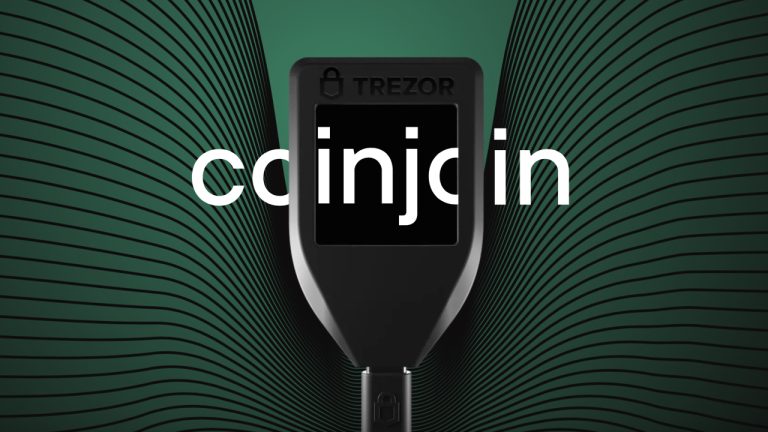
German regulators demand compliance changes from World ID after a biometric data investigation.
Update (Dec. 19 and 15:12 UTC): This article has been updated to clarify that, in May 2024, Worldcoin deleted all data from its old iris code to comply with local regulations.
German data protection authority, the Bavarian State Office for Data Protection Supervision (BayLDA), has issued corrective measures for the digital identity project World, formerly known as Worldcoin, over its handling of biometric data.
The BayLDA announced on Dec. 19 that it had concluded its investigation into World’s compliance with the European Union’s General Data Protection Regulation (GDPR).
 A Russian digital services expert has predicted a future where passport-based identification for Internet access becomes the norm, citing a broader trend towards the de-anonymization of online spaces. His comments follow a move by Telegram to disclose user data during rule violation investigations, reflecting a significant shift in how anonymity is handled on the web. […]
A Russian digital services expert has predicted a future where passport-based identification for Internet access becomes the norm, citing a broader trend towards the de-anonymization of online spaces. His comments follow a move by Telegram to disclose user data during rule violation investigations, reflecting a significant shift in how anonymity is handled on the web. […]
The Bank for International Settlement’s Project Tourbillon features two eCash prototypes, the first providing “unconditional payer anonymity” and the second being “more resilient” in security terms.
The Bank for International Settlements (BIS) Innovation Hub has presented the final report on its private central bank digital currency (CBDC) initiative, Project Tourbillon. The prototypes built in the project’s framework could allow payment anonymity for CBDC transactions.
The 46-page report, published on Nov. 29, explores the concepts of privacy, security and scalability on the material of two prototypes based on the designs of one of the pioneers of cryptography, David Chaum. The prototypes were called eCash 1.0 and eCash 2.0. While the former provides “unconditional payer anonymity,” the latter has “more resilient” security features.
According to the report authors, “it is feasible to implement a CBDC that provides payer anonymity while combating illicit transactions.” Project Tourbillon achieves that with the complete anonymity of the consumer during the transaction with the merchant, the report says:
“A consumer paying a merchant with CBDCs is anonymous to all parties, including the merchant, banks and the central bank.”
The merchant’s identity in this scheme is known to the payer and is only disclosed to the merchant’s bank as part of the payment. The central bank doesn’t see any personal payment data but can monitor CBDC circulation at an aggregate level.
Related: The ‘godfather of crypto’ wants to create a privacy-focused CBDC. Here’s how
However, in the first stage, all users must undergo a Know Your Customer procedure at a commercial bank to use the CBDC. As in the current financial system, the merchant’s bank remains responsible for ensuring that transactions comply with regulatory requirements such as Anti-Money Laundering, Countering the Financing of Terrorism and tax evasion laws.
The report concludes that Tourbillon’s payment process is easy to integrate into today’s payment landscape as it uses existing technologies such as QR codes, proof-of-stake protocols and account relationships between customers, merchants, banks and central banks.
The BIS spearheads global CBDC adoption, assisting the Swiss National Bank in wholesale CBDC development and collaborating on joint platforms with central banks in China, Hong Kong, Thailand and the United Arab Emirates, among others. It is also working on a transaction tracker proof-of-concept with the European Central Bank.
Magazine: Real AI use cases in crypto, No. 2: AIs can run DAOs

The Agenda podcast chats with DarkFi to explore how Rojava is experimenting with cryptocurrency and why encryption and anonymous spaces are critical for building self-autonomy.
In the mid-2010s, the Islamic State was rapidly advancing through Iraq and Syria, conquering territory and terrifying residents. However, one group of Kurds in Northern Syria representing the de facto autonomous Democratic Federation of Northern Syria, in an area known as Rojava, successfully fought back the Islamic State and captured the attention of the world.
Many people from around the world went to Rojava to fight, but one lesser-known story made ripples in the crypto world: Some volunteers traveled there to help build blockchain and technological literacy and experiment with the potential of cryptocurrencies like Bitcoin (BTC) to serve as a tool for revolutionary change. After all, Rojava promotes decentralization, autonomy and self-empowerment — sound familiar?
On Episode 10 of The Agenda, hosts Ray Salmond and Jonathan DeYoung were joined by Rachel Rose-O’Leary and Kato, who discussed their work volunteering in Rojava and how those experiences inspired and relate to their current work developing DarkFi, an anonymous blockchain protocol.

O’Leary traveled to Rojava in late 2018 after feeling disillusioned with the crypto space and how far it had seemingly strayed from its early cypherpunk roots. “I was convinced at that time that Rojava was a place where the ideals of crypto were being fielded and tested,” she said. O’Leary was inspired by Amir Taaki, an early Bitcoin pioneer who himself traveled to the region to volunteer.
Meanwhile, Kato first discovered crypto while already in Rojava. “I basically got interested in crypto and in privacy technologies because of the actual need of the people,” he shared. “I saw the actual use cases, and a lot of people at that time already around the world started using crypto for practical means, like for sending money around.”
“If you don’t have a working banking system or you don’t have access, which is true for most of the world, it’s much more efficient. And also especially if you’re facing persecution and political oppression. And often, it’s actually the only way that you have.”
O’Leary spent much of her time “volunteering very much with building educational infrastructure, especially in terms of technology” — including introducing people to crypto and blockchain. “It’s a very interesting environment for crypto because of the fact that there are no banks,” she shared. “Also, there is no state. So, cryptocurrency is a really interesting like financial paradigm for that kind of a context.”
Related: ‘Privacy has become a taboo,’ says crypto-anarchist project DarkFi
When asked about whether crypto education is continuing in Rojava in 2023, Kato responded, “There are technical academies and education centers in Rojava, and even new ones have been opened over the last years.” However, the work remains difficult, as “the war is a huge pressure, not just on technical education but on all social fields.”
Both Kato and O’Leary now work on DarkFi, an anonymous layer-1 blockchain protocol. For O’Leary, privacy is essential for the ability of communities to operate freely and autonomously, and the anonymity provided by encryption represents a 21st-century tool for people to express themselves fully:
“If people are under constant surveillance and monitoring by an enormous surveillance apparatus and a surveillance state, then they’re being prohibited from exercising [...] their moral and political society.”
When asked about the future of privacy and whether it’s possible to break free from the mass surveillance paradigm, Kato said that “we’re going to have that struggle for a long time, and for much longer than decades,” adding: “It’s maybe the most fundamental struggle of human society.”
But is there light at the end of the tunnel? Kato believes that through decentralized tools like blockchain, “we have this technology to be able to develop our own financial and economic systems that are actually democratically managed by the people who use them according to what they actually need.”
“There are moments in history where technology reconfigures the nature of power, and the printing press is a very common example,” added O’Leary. “I think we have a similar situation now happening in cryptocurrency, where it’s hard to see now because we’re just at the onset of it. But the basis of power is in the process of being reconfigured by virtue of these technologies.”
To hear more from Kato and O’Leary’s conversation with The Agenda — including their takes on venture capital funding, decentralized finance, and solarpunk vs. lunarpunk — listen to the full episode on Cointelegraph’s Podcasts page, Apple Podcasts or Spotify. And don’t forget to check out Cointelegraph’s full lineup of other shows!
Magazine: Bitcoin in Senegal: Why is this African country using BTC?
This article is for general information purposes and is not intended to be and should not be taken as legal or investment advice. The views, thoughts, and opinions expressed here are the author’s alone and do not necessarily reflect or represent the views and opinions of Cointelegraph.

A member of the U.S. Commodity Futures Trading Commission (CFTC) is reportedly calling for the anonymity of crypto transactions to curtail illicit activity. According to a new Reuters report, CFTC commissioner Christy Goldsmith Romero says that tighter governmental and industry controls on digital assets are needed to curtail risks to national security. During remarks at […]
The post Anonymity in Crypto Must End, Says Top US Regulator at CFTC – Here’s Why appeared first on The Daily Hodl.
 According to Trezor, the crypto hardware wallet manufacturer, owners of the Trezor T model can now use a Coinjoin feature to preserve their privacy. Trezor had announced the Coinjoin feature’s impending arrival on the hardware wallet seven months ago, and the feature went live on April 19. Trezor Adds Coinjoin to Software Suite Owners of […]
According to Trezor, the crypto hardware wallet manufacturer, owners of the Trezor T model can now use a Coinjoin feature to preserve their privacy. Trezor had announced the Coinjoin feature’s impending arrival on the hardware wallet seven months ago, and the feature went live on April 19. Trezor Adds Coinjoin to Software Suite Owners of […] On Monday, Wasabi Wallet and the open-source bitcoin payment processor Btcpay announced a new plugin for the Btcpay server. The plugin implements Wasabi’s Wabisabi coinjoin coordination protocol, allowing merchants to benefit from privacy enhancement. By activating the newly launched plugin, all the funds that merchants receive and send will be coinjoined, or mixed together with […]
On Monday, Wasabi Wallet and the open-source bitcoin payment processor Btcpay announced a new plugin for the Btcpay server. The plugin implements Wasabi’s Wabisabi coinjoin coordination protocol, allowing merchants to benefit from privacy enhancement. By activating the newly launched plugin, all the funds that merchants receive and send will be coinjoined, or mixed together with […] Ethereum co-founder Vitalik Buterin published a research post that suggests using stealth addresses to enhance privacy-preserving transfers. Buterin detailed that stealth addresses can be implemented fairly quickly today on Ethereum and would significantly boost user privacy on the blockchain network. Buterin Suggests Stealth Addresses as a Solution to the Privacy Challenges in Ethereum Ecosystem Three […]
Ethereum co-founder Vitalik Buterin published a research post that suggests using stealth addresses to enhance privacy-preserving transfers. Buterin detailed that stealth addresses can be implemented fairly quickly today on Ethereum and would significantly boost user privacy on the blockchain network. Buterin Suggests Stealth Addresses as a Solution to the Privacy Challenges in Ethereum Ecosystem Three […]
Blockchain combined with decentralized storage could ensure data preservation and anonymity when reporting war crimes.
Human rights investigators appointed by the United Nations (UN) have confirmed war crimes have been committed by Russian forces in Ukraine. A report developed by the Independent International Commission of Inquiry on Ukraine was created in March 2022 to provide a framework for UN human rights investigators to report war crimes in the region.
Erik Møse, chair for the Independent International Commission of Inquiry on Ukraine, stated in the UN’s article that “investigators visited 27 towns and settlements and interviewed more than 150 victims and witnesses.” Møse also noted that “sites of destruction, graves, places of detention and torture, as well as remnants of weapons,” were inspected.
While the report developed by the commission has allowed UN investigators to document war crimes in Ukraine, tools and protocols are still needed to enable individuals to accurately and securely report these acts. Additionally, the need to preserve war crime evidence has become critical as the War in Ukraine enters its seventh month.
Given these challenges, industry experts believe that blockchain technology has the potential to solve many of the issues faced by individuals and organizations documenting war crimes. For example, Jaya Klara Brekke, chief strategy officer at Nym — a platform powered by the Cosmos blockchain that protects the privacy of various applications — told Cointelegraph that Nym is developing a tool known as AnonDrop that will allow users to securely and anonymously upload data. She said:
“The intention is for AnonDrop to become a tool that democratizes the gathering of evidence that can be used to pursue human rights cases. In the current climate in Ukraine, this would be particularly important for the purpose of securely documenting and sharing evidence of war crimes anonymously.”
“The core technology of Nym is a mixnet, which takes data from ordinary users and mixes it together using encryption to make everything look identical. It protects against people watching the network, along with metadata surveillance and IP tracing,” she elaborated. While Nym provides an anonymity layer to allow users to transmit data without revealing who they are, information then gets stored on the decentralized storage network, Filecoin.
Will Scott, a software engineer at Protocol Labs — a company working with Filecoin on its decentralized storage solution — told Cointelegraph that some of humanity’s most important information is stored on Filecoin to ensure that data remains publicly available.
Recent: Are decentralized digital identities the future or just a niche use case?
A blockchain network combined with decentralized storage could be a critical tool for documenting war crimes since it allows individuals in regions like Ukraine to anonymously report, share and retain data. A Wall Street Journal article published in May 2022 stated that “Prosecutors say that, with Russian forces having occupied so much of the country, it is impossible to process all of the evidence of every potential war crime.” Moreover, Ahmed Ghappour, Nym general counsel and associate professor of law at Boston University, told Cointelegraph that it’s becoming critical for witnesses of human rights violations to come forward without fear of retaliation. He said:
“In Ukraine, where witnesses of war crimes are facing a technologically sophisticated adversary, network level anonymity is the only way to guarantee the safety and security needed to provide evidence to prosecute perpetrators.”
Although the potential behind AnonDrop is evident, Klara Brekke noted that the solution is still in its early development stages. “We took part in the Kyiv Tech Summit Hackathon this year hoping to find individuals who could help us extend AnonDrop’s functionality. For instance, AnonDrop’s user interface is not fully up yet and we still need to find a way to verify the authenticity of images uploaded to the network,” she explained.
Ghappour elaborated that verification is the next critical requirement for making sure evidence uploaded to the Nym network can be used in court. “I think one of Russia’s greatest strengths in this war is the region’s ability to deny that any evidence is valid. Russia’s use of deepfakes and misinformation is another strength. We need to guard against these attacks.”
In order to combat this, Ghappour mentioned that image providence features must be implemented within AnonDrop to enable easy verification when documents are examined in a court of law. Even though such processes for image verification currently exist through tools like SecureDrop — a solution that allows individuals to upload photos anonymously for media outlets to use — Ghappour believes that these are limited to siloed organizations.
“We want to take image verification a step further by democratizing the process, ensuring this feature is available to users rather than just media outlets.”
Once image providence is implemented, verifying war crimes could become easier for court officials. Brittany Kaiser, a human rights legal expert, told Cointelegraph that she believes such a tool could help advance the human rights documentation space, where often individuals feel too at risk to submit findings themselves.
“Through images alone, it is possible to verify typical indicators of atrocity crime, including, but not limited to, mass graves, torture marks, binding of hands, executions and other violations of international human rights law that amount to war crimes or other atrocity classifications,” she remarked.
Given the potential for this use case, it shouldn’t come as a surprise that AnonDrop isn’t the only blockchain application focused on the preservation and verification of war crimes. Starling Labs — a Stanford-based research lab focused on data integrity using cryptography and decentralized web protocols — is also using blockchain technology to report war crimes. However, verifying the integrity of data remains the biggest challenge for both Nym and Starling Labs, even with image providence in place.
For instance, Scott pointed out that progress must be made in order to make sure images are legitimate and that verification works well. He further remarked that access to the internet in various regions of Ukraine is censored: “There are distribution questions that are important to consider here.”
Recent: Vietnam’s crypto adoption: Factors driving growth in Southeast Asia
Challenges aside, it’s notable that organizations responsible for prosecuting war crimes are considering using technology to help advance traditional processes. For example, The International Criminal Court (ICC) in The Hague noted in its strategic plan for 2016 to 2018 that it could “support the identification, collection and presentation of evidence through technology.”
The report further noted that the ICC is interested in developing partnerships with non-governmental organizations and academic institutions to facilitate the use of technological advancements for war crime documentation. In the meantime, Ghappour emphasized that Nym will continue to push forward with enabling AnonDrop to be used in regions like Ukraine: “Russia has prolonged wars in the past, so we need to progress with this project no matter what.”